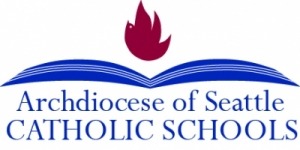Reopening for Fall 2020

June 18, 2020
Dear Catholic School Leaders, Teachers, Families,
Little did we know in March, that our plans for distance/remote learning would take us to the end of the academic school year, and yet, here we are! What does this mean for us as we reflect on what we have learned, and how to prepare for what next year may look like?
Our school leaders have been working with one another to create a local plan for each school to reopen in the fall of 2020. To guide us, we have considered four essential questions:
- How do we ensure that our school’s mission drives our decision-making?
- How do we support and address the most current safety issues for all students and staff?
- How will we address equity issues to support students and families?
- How do we build on what we have learned from digital learning? What successes have we identified in digital learning? How do we build those elements into our plans for 20-21?
On March 16 after the Governor closed schools, our school leaders and teachers fastened their seat belts and drove quickly to provide families with a remote learning plan to support students and families. We have learned much in the past 3 months, and we all know we have much more to learn. So, as we close up the school year that will go down in the history books as the one that changed the way we “do” school, the Office for Catholic Schools, in consultation with our Archbishop, has provided six recommendations for our school leaders. The six recommendations for our leaders are based on the current plan to reopen and invite students back to campus in the Fall:
- Provide families with at least two re-opening scenarios based on the different Safe Start phases outlined by the State of Washington.
- Review the Academic Calendar to provide 180 days/ 1000 hours instructional time. Consider: an earlier start in August or a later ending date; staggered starts that promote community development at all grade levels, with an emphasis on the early grades; the reality that the schools may need to fluctuate between different phases, or even return to full teacher directed remote learning.
- Adhere to all the most current training and safety precautions: washing of hands, wearing a face covering for all who enter the building, maintaining physical distancing through the creative use of other available spaces on the campus, and the flexible use of all available staff to allow for smaller class sizes if possible.
- Provide extended (after/before) care, if staffing, facilities and resources will allow, which will follow the guidelines set forth by the CDC and the local health department.
- Survey parents to determine satisfaction and opportunities for growth with remote learning, which will help set the teacher directed distance learning expectations for next year.
- Communicate with your families and staff regularly –at least two times a month throughout the summer. Help families recognize that school facilities access will be regulated.
We recognize that the context for our decisions allows for family and local school considerations. Regardless of a school’s decision to open, some families will not want their students to return right away. International students may be unable to return. Schools need to be prepared with a hybrid model that allows students who are not on campus to continue their learning. Every school’s decisions and procedures are impacted by variables unique to that school: including staffing and enrollment, space availability/facilities, and access to reliable technology.
In the Office for Catholic Schools, we will work to provide access to professional development for our teachers to continue their efforts in providing remote/distance learning. We will continue to collaborate to share best practices and encourage one another.
Kristin Dixon
Superintendent
